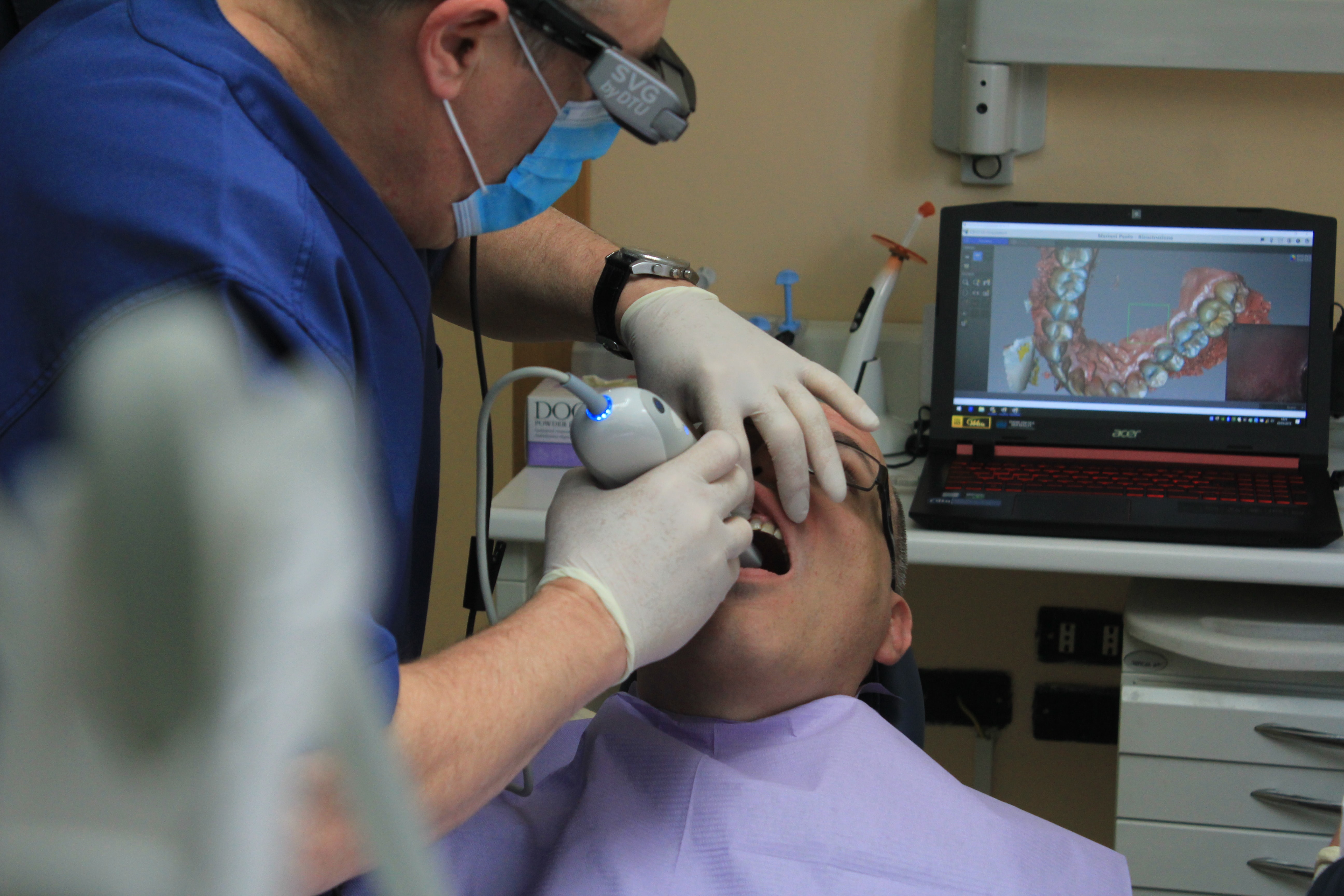Scintillating Substrate Compositions and Coatings for Dual-Screen Flat-Panel Detector Improvements
Using light-scattering glass-ceramic scintillators to increase the sensitivity and detective quantum efficiency of flat-panel detectors
There is a need for improvements in diagnostic imaging devices that are utilized in various clinical applications. Two notable clinical applications where detectors have a relatively poor performance are cone beam computed tomography and image-guided surgery. There has to be a balance between cost and efficiency, and there is a demand for a detector system that can adequately balance both. One specific example of a present need in the market would be in the area of digital x-ray detectors for clinical applications that require a higher-energy x-ray beam (such as cone beam computed tomography). Existing detectors used in that field perform very poorly in terms of efficiency and cost-effectiveness. An improved low dose digital flat panel imaging device which can output high quality at high x-ray energies would meet the current needs of patients' revolving around correct diagnostic performance while minimizing their exposure to ionizing radiation. The clinician's need for high quality imagery in an efficient digital workflow is also met, along with the payer's need to provide the detector service at a minimal expenditure. Therefore, there exists a want and need for a diagnostic radiological imaging device that can provide high quality images in a digital format with a low x-ray does and which can perform at a lower cost.
Light-Scattering Glass-Ceramic Scintillators as Substrates; This technology revolves around the use of light-scattering glass ceramic scintillators as substrates for dual-screen flat-panel detector applications. The glass ceramic materials have two main uses within this system. The first purpose they serve is to act as a support for the thin film transistor arrays and photosensor arrays in flat-panel detectors. They directly replace the borosilicate glass substrates that are conventionally used in commercial systems. The second purpose they have is to capture the unattenuated radiation that passes through the front intensifier screen of the flat-panel detector and convert it into visible light. This consequently increases sensitivity and the detective quantum efficiency of the system. The glass ceramics can effectively do this because they contain optically-active dopants in the glass matrix which enable scintillation (the emission of light in the visible portion of the electromagnetic spectrum in response to the incident, ionizing radiation). The glass ceramics also contain a crystalline phase within the matrix, which scatters the light emission from the optically-active dopants, decreasing light-trapping within the material and increasing detection efficiency. The crystalline phase may also serve as a scintillator, increasing the emission intensity of the material. Scintillating Substrate Coating Composition and Method; This technology focuses on the use of coated substrates with scintillating materials for dual-screen flat-panel detector applications. Currently in commercial detector systems, borosilicate glass substrates are used for the thin film transistor (TFT) and photosensor arrays within the systems. Firstly, this method involves using a specific coating for the substrates used in the technology. The coating has two layers; the first layer consists of a polycrystalline scintillator that emits light in the visible portion of the electromagnetic spectrum in response to incident and ionizing radiation. The second layer consists of a borosilicate glass (or something similar) and its purpose is to protect the scintillator layer and to also provide a surface to support the TFT array of the flat-panel detector. To increase the spatial resolution of the system, the second layer is thin which causes a reduction in the light spreading within. This technology uses the coated substrates as a direct replacement for the borosilicate glass substrates and they are more efficient and effective than the traditional detector systems. This is because of the fact that the coated substrates capture a portion of the unattenuated radiation that passes through the front intensifier screen of the flat-panel detector and converts it to visible light. This consequently increases the sensitivity of the detector system and also increases the overall detective quantum efficiency of the system.
 Source: Quang Tri NGUYEN, https://unsplash.com/photos/4YZyBNA1UeA, Unsplash License.
Source: Quang Tri NGUYEN, https://unsplash.com/photos/4YZyBNA1UeA, Unsplash License.
Cheaper than commercial detector systems used presently - more detective quantum efficiency than commercial detector systems - more sensitivity of the detector system when compared To commercial systems - Lower dosage of x-rays required thus increasing patient safety - higher quality diagnostic images than commercial systems
This technology can be used in clinical applications such as cone beam computed tomography and image-guided surgery. The applications can be expanded to other medical procedures as well if necessary.
Provisional patent
62/965,460 62/965,471
Available for Licensing.
Development partner,Commercial partner,Licensing
Patent Information:
| App Type |
Country |
Serial No. |
Patent No. |
Patent Status |
File Date |
Issued Date |
Expire Date |
|